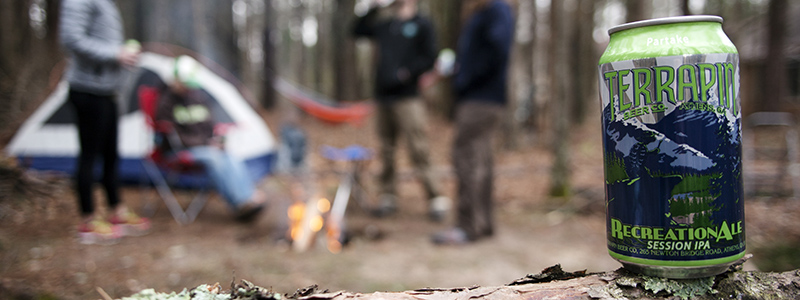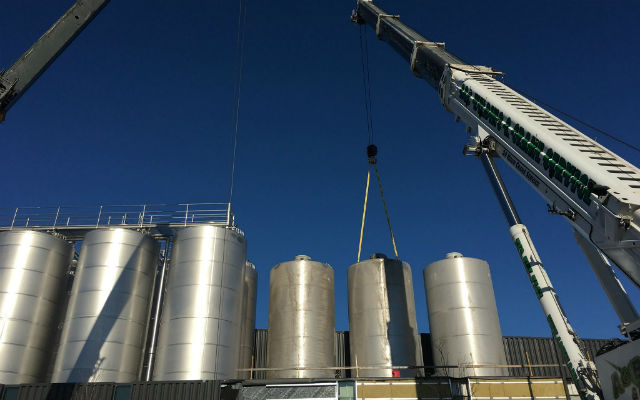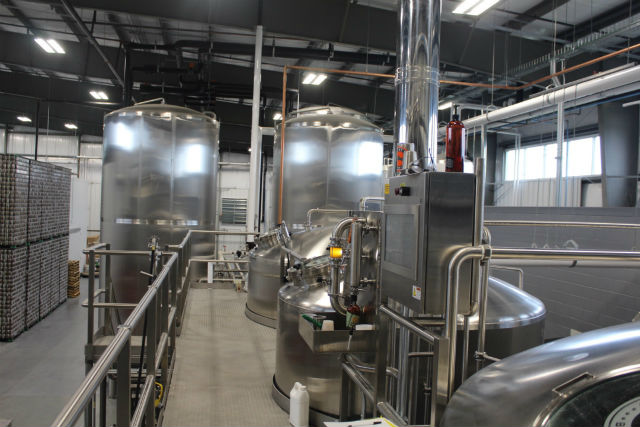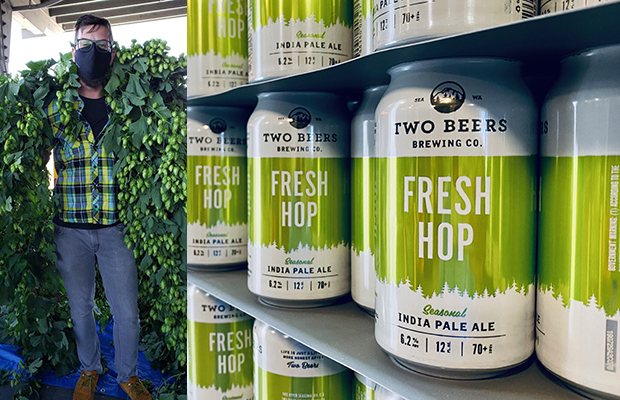
Many breweries prefer to maintain their brand, creative decisions and trade-driven positions internally instead of outsourcing.
For Terrapin Brewing’s Marketing Director Julia Welbeck, having that creativity available in-house can produce so much more when it is born from a brainstorming session that might include folks from production or people who work in the taproom.
“Whomever is present,” she indicated. “I don’t think you capture that kind of collaborative energy with an agency.”
Having an internal team has allowed Firestone Walker to be much more flexible and be able to react quickly to a myriad of incoming requests from all aspects of the brewery.
“It has cultivated a team of experts on our brand and our marketing efforts,” said Jamie Smith, the head of Marketing & Branding for Firestone Walker. “They are dedicated 100 percent of the time to the Firestone Walker and 805 brands.”
Smith stressed some marketing functions, like PR and advertising buying, utilize the help of an outside company, but he still feels that the brand’s story is sacred.
“We must be the owners of that,” he said. “We must be the originators of creative content to keep our message relevant and authentic.”
The Ninkasi marketing team consist of design, events, programs (including the ambassador and donations programs), PR and social media. They also run an Artist in Residence program where the team opens its doors to select artists for collaboration projects.
“Because we are a small team, we often end up wearing multiple hats around the brewery like volunteering at events and participating in other functions,” said Communications Director Ali AAsum. “We are also able to work with our brewing team to craft a beer’s branding from the very inception of its recipe. This enables us to curate branding that is authentic and visually communicate the story of each beer. We have to work hard to ensure we keep a consumer’s perspective in-mind throughout the process since we are so close to each project.”

The con AAsum notes with having in-house marketing is the costs to hire a team, however, in Ninkasi’s case, AAsum says it’s an essential part of what makes the brewery’s brand unique and authentic.
Money is also a major factor for many of even the biggest breweries in the country to stay in-house for creative decisions.
“I think [the way Ballast Point markets] started as not having the budget and we have been pretty scrappy,” said Ballast Point’s Vice President of Marketing Hilary Cocalis. “We aren’t big [as a staff], it was more a matter that we could handle it our self.”
That means very little in specialization. Cocalis said just recently she hired a copy editor for the marketing department, freeing her up from the bulk of the responsibility she had for nearly four years.
“We are just generally getting more sophisticated,” she said. “We have been mainly very guerrilla in styles of marketing, with not a ton of forecasting or planning with campaigns. It’s been very word of mouth and social media.”
Hiring though is generally on the rise and finding people that can adapt to being flexible can be a key.
Welbeck said that Terrapin screens for the basic job description and then focuses on cultural fits. Also, whenever possible they try to hire from within.
“Sometimes that means we have to build in a little time for training but I think in the long run it’s why we have very little turnover in our department and people who passionate about the brand,” she said.
Smith said he is fortunate that Firestone Walker has an array of people who have come in with experience and also those who have come up through the company to their current position.
“The diversity gives us a nice mix of perspectives from the whole staff,” he said. “Essentially we are looking for people who are passionate, great team members and are dedicated to the brand.”
There are times though, where a brewery’s marketing department can only go so far, especially in brand refreshes, web design, photography or video production. That’s when the specialists are called in.
For Victory Brewing, that meant hiring out for a mobile app beer finder.
“When you work with the right consultant, it should come from the source,” said Victory co-founder Bill Covaleski. “We had a strong sense of how our information should be displayed and we had a great relationship with both suppliers and they helped guide us.
In a way it’s not all different than when [fellow co-founder Ron Barchet] and I are specing a new brewhouse, for example, we explain to the supplier what we want out of it and then tell them the inputs and they get us from Point A to Point B.”
Covaleski noted that the world of craft beer marketing has changed significantly since opening Victory’s doors. Consumers are more keen now than ever before and they want more and more specifics to products and brands.
“When I was developing the HopDevil brand in 1995, the world we were making beer for didn’t really know what an India Pale Ale was,” he explained. “So it made no sense to scream India Pale Ale on the label. So instead we had an opportunity to build something more evocative and call it a HopDevil Ale, then we could get to what the product was inside by using more visual cues and really build something seductive and intriguing from a pure brand name.
“Now, when you look at a shelf, you need to actually state the product type or attributes, pretty rapidly. Consumers are deluged with different options and so the product has to announce it’s real stuff inside the package rapidly. That’s been an amazing shift. It’s been so important because that is where the consumer choice is made.”





Be the first to comment